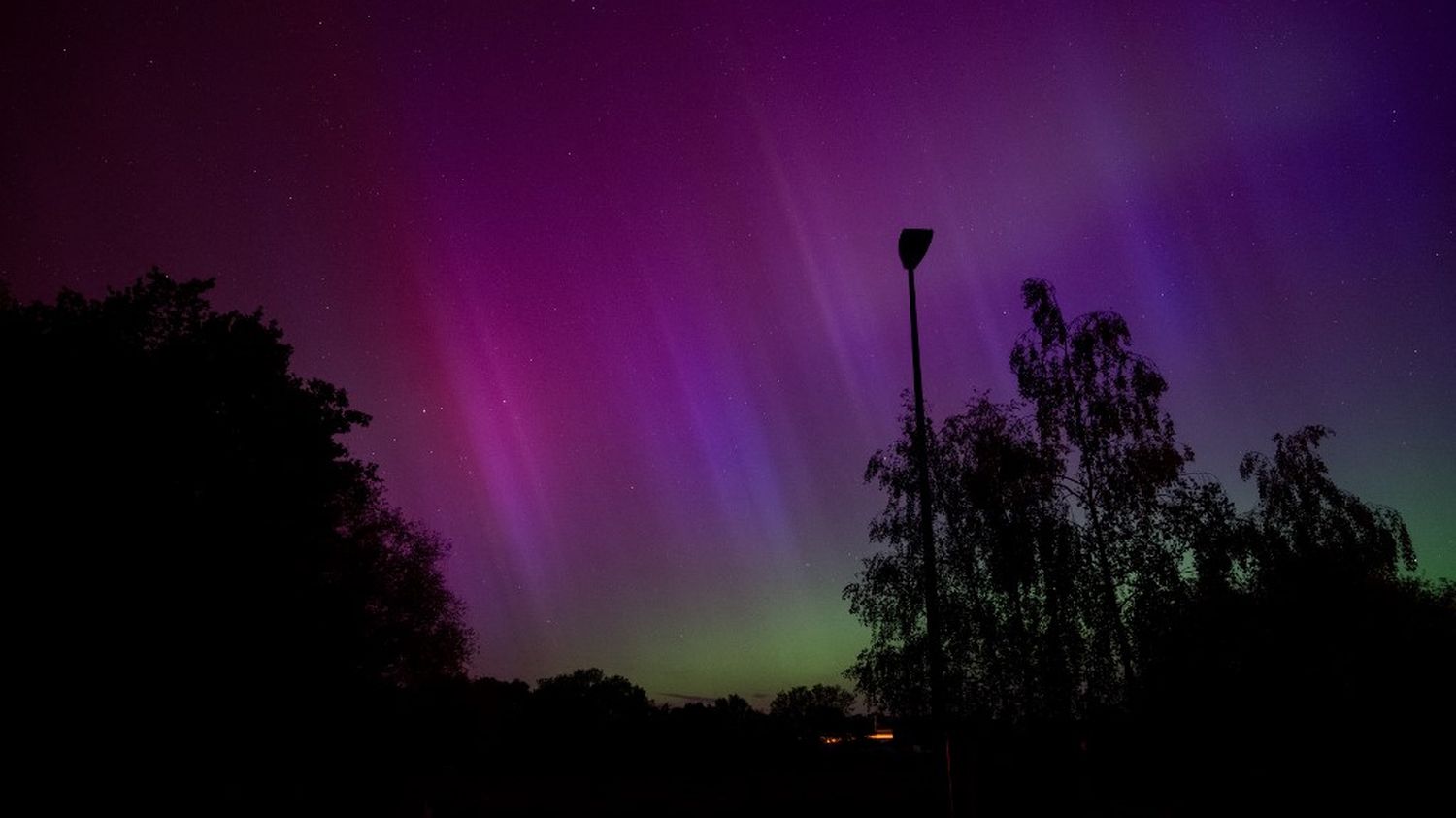Franceinfo looks at the origin of the hues of this spectacular luminous phenomenon, while strong solar storms risk hitting the Earth this year, with the peak of our sun’s activity expected for the beginning of 2025.
A night sky tinged with pink, red or even mauve… This striking spectacle is that of the northern lights, some of which may be exceptionally visible in our latitudes, in 2024, due to the strong activity of the Sun. Our star, which experiences eleven-year cycles, should experience its peak of activity at the end of 2024 or the beginning of 2025. The solar flares that should occur this week could be an opportunity to see the night light up with colorful glows, even if the phenomenon will be less intense than on May 10.
Mostly green or red, the northern lights (or southern lights) can have different colors. But they all come from the same mechanism, explains to franceinfo Jean Lilensten, astronomer and planetologist, research director at the Institute of Planetology and Astrophysics of Grenoble. “Aurorae are electrons that come from the Sun and descend into the Earth’s atmosphere. Scientists say they precipitate. Like precipitation, when it rains.”he presents.
The colors depend on several factors, the main ones being the speed of the solar wind, the altitude at which the particles of this wind penetrate the atmosphere, and the gases that react. The brightness of the auroras, that is to say their intensity, is linked to the power of the solar storm, and therefore to the quantity of matter that reaches us.
“When the solar wind particles arrive at a relatively low speed, that is, 700 000 km/h – this may seem like a lot to a human but it is not much – it stops quite high in the atmosphere, above 200 km altitude”explains Jean Lilensten. It then collides with oxygen (O), which is not the dioxygen (O2) that we breathe. The oxygen atoms receive energy during this collision. They are then “excited” then “de-excite” and release this energy in the form of red light. “It’s a deep red, very dark, very tenuous.”explains Jean Lilensten.
The average solar wind travels at about 1,300,000 km/h. “As it arrives at a faster speed, it descends lower, up to 95 km altitude”notes the scientist. At this height, it also hits oxygen atoms but with higher energy. There, “while de-exciting”atoms emit a green color. This is the most commonly observed color for auroras. “In the Arctic, we have almost only green”Olivier Katz, forecaster at the Alpine Space Meteorology Operational Center, told franceinfo.

More rarely, gusts of solar wind reach us at 4 or 6 million km/h and descend to an altitude of 80 km. “No lower, because then the air is too dense”slips Jean Lilensten. The solar wind particles then encounter the air we breathe, which contains dioxygen and nitrogen. The significant energy involved, associated with these gases, gives rise to other reactions, generating other colors, such as “purple, blue, slightly yellowish white or even orange”lists Jean Lilensten. The pinkish hues, widely observed in the French sky on May 10, are also linked to the presence of nitrogen molecules.
Not to mention that there are various rare and complex mechanisms, that colours can mix with molecules that end up a little higher up due to the agitation of the atmosphere caused by the sometimes powerful solar wind, the specialist underlines.
On a human scale, these altitudes are very high. The troposphere, the layer of the atmosphere in which we live and where we find clouds, whose limit is on average 10 km above sea level. As the National Center for Space Studies (CNES), the French Space Agency, reminds us in the following video, the reactions that generate auroras take place between the mesosphere (between 50 and 80 km above sea level) and its upper layer, the thermosphere.
The physical process of forming the colours of the auroras is relatively well known. However, our perception of this phenomenon is altered by various factors. About the evening of May 10, in France, Jean Lilensten recounts: “Most people who were in valleys told me they saw a completely red sky.” In reality, “Since the Earth is round, they only saw the top of the aurora, and not the bottom”. The same evening, he found himself “on a mountain pass, at 1 200 meters above sea level”. “I could see the bottom, all the green fringe and areas of purple.”he describes.
He also calls for taking a step back from the colors of photos taken with phones. “In many photos [des aurores du 10 mai]we see yellow but there was none”he says.
“The white balance on smartphones is preset to bring out warm colors.”
Jean Lilensten, astronomer and planetologist, specialist in polar aurorasto franceinfo
The colors that actually dance in the sky are sometimes difficult to capture, “between photographers who retouch consciously and the automatic settings of the devices”comments Olivier Katz. He points out in passing that seeing blue during the auroras is “very rare”The scientist insists on this point because he has noticed that the images of auroras that we have seen on the internet are leaning “enormously” towards this color and that they were thus peddled “in the collective imagination, in films, in series”. According to him, almost all of these images of aurora were artificially “drawn towards blue”.
Ultimately, the flattering rendering of the photos, whether they are more yellow or blue, does not reflect reality. This is why Jean Lilensten solemnly urges those who are lucky enough to see the auroras to put their phones away for a while and contemplate them directly with their eyes.
